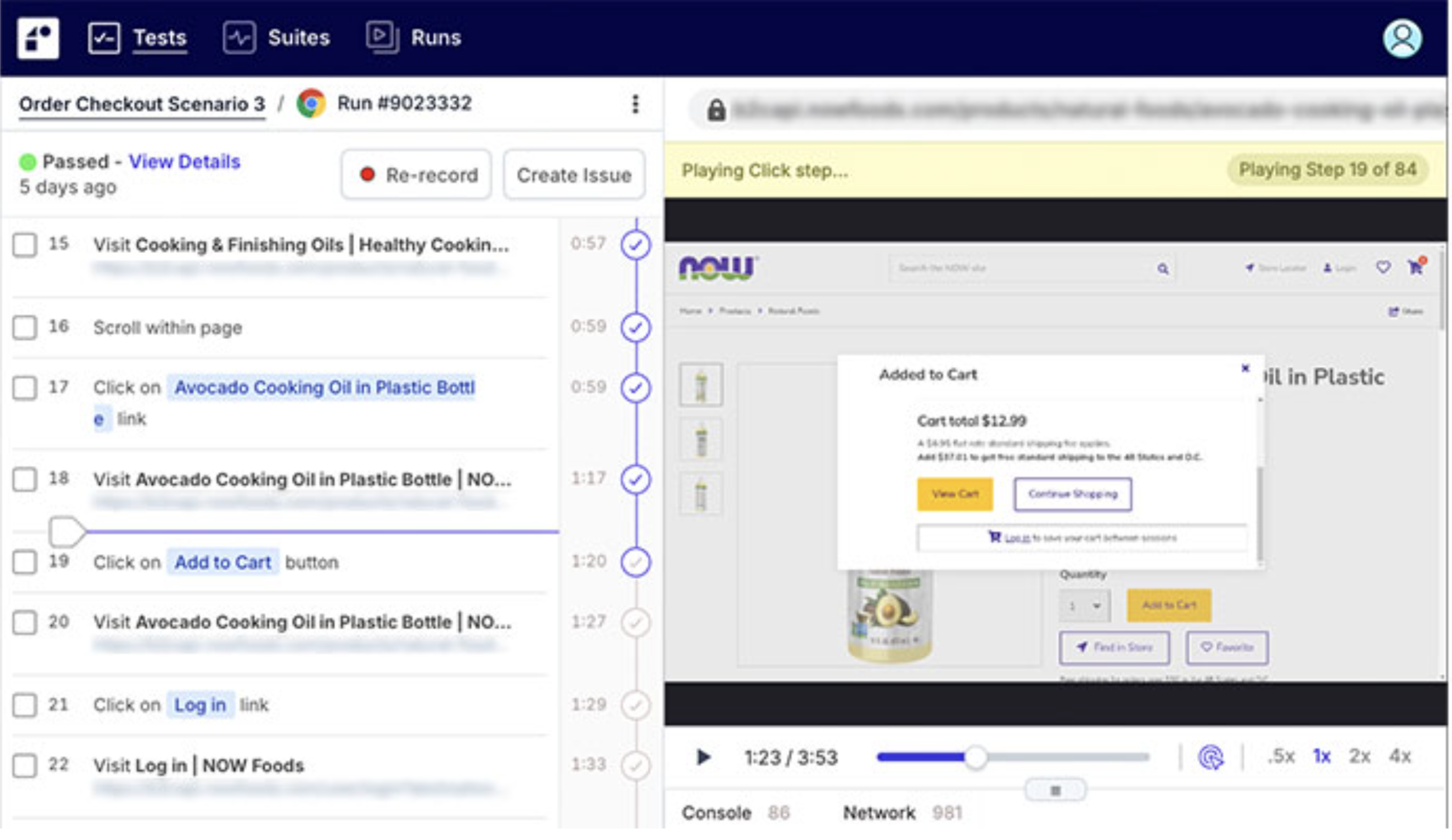
The Future of Automated Testing Is No-Code

If you have been in software development for any length of time, undoubtedly you will have been exposed to automated testing. The list of testing tools can seem endless: Cypress, Behat, Nightwatch.js, Selenium, Puppeteer, Jest, Mocha, Jasmine… you get the idea!
Every one of these tools requires developers to take the lead on implementing them. However, one tool we have embraced is Reflect, which is a leader in the no-code/AI-enhanced automated testing space.
Reflect is a Different Kind of Automated Testing Tool
Instead of writing test cases, logic flows, and sifting through reams of element identifiers, Reflect allows you to easily construct your automated test suite by just clicking and typing, just like a real user would. Or better yet, write simple instructions for your AI to follow, and Reflect will generate your tests for you!
Anyone with an eye for detail and product knowledge can construct automated, reproducible tests with Reflect. This unlocks a golden opportunity for those who are the experts in end-to-end system testing: project management teams and quality assurance engineers. At the same time, it frees up your software developers to focus on software development and improved component and integration testing.

Key Benefits of Automated Testing with Reflect
1. No-Code/AI-Powered Test Creation
At the heart of Reflect is its no-code interface, allowing users to create tests by simply navigating their web application as an end-user would. This intuitive process not only makes test creation faster but also more accessible to team members without specialized testing knowledge. Alternatively, users can write a series of natural-language prompts (just like with ChatGPT), and Reflect will use AI to generate your tests for you.
2. Seamless Integration
Reflect.run integrates seamlessly with CI/CD pipelines, ensuring tests are automatically run as part of the deployment process. This integration streamlines workflows, further saving developers time by automating the testing phase of deployments.
3. Visual Testing
Beyond functional testing, Reflect offers visual regression testing, automatically detecting UI changes that could impact user experience. This feature ensures that visual aspects are not overlooked, saving additional time that would otherwise be spent on manual UI inspections.
4. Free Your Developers to Write Code, Not Tests
By leveraging Reflect, developers can focus more on creating and refining features rather than getting bogged down by the intricacies of testing. This shift not only accelerates the development cycle but also improves the overall quality and reliability of web applications.
3 Tips From Automated Testing With Our Clients
We have implemented Reflect for several organizations, including NOW Foods, a leading manufacturer of natural health products, including dietary supplements, natural foods, sports nutrition and personal care products.
NOW Foods relies on a seamless e-commerce experience, combined with constant innovation and optimization that requires frequent site and functionality updates. Automated testing was a must-have to ensure that all core user paths performed flawlessly with every software release.
Based on our experience, we’ve outlined three tips to ensure you’re making the best use of this automated testing tool.
1. Use Segments
Test segments are reusable test steps that can be used over and over in the same or different tests. Do many of your tests require a user login? Make it a segment! Do some of your tests require mimicking a checkout screen purchase? Make it a segment!
2. Setup Test Suites
Test suites are perfect for scheduling regular batteries of tests, and getting notified when tests succeed or fail. Many people appreciate it when a system is looking out for them and assures them on a regular basis that everything is still running smoothly.
3. Don’t Sacrifice Security
If you are like us, your development and staging environments are not accessible to the wider internet. Often this can be a problem with remote SaaS products. Do your environments require a VPN (whitelisted IP address)? Do they require CAPTCHA? Luckily Reflect.run supports static IP addresses unique to your account. With a static IP, you can easily add it to your whitelists to get past router-based and CAPTCHA-based security.
A Leap Forward
Reflect represents a significant leap forward in the automation of testing processes. Its no-code/AI approach, combined with seamless integration capabilities and visual regression testing, makes it an invaluable tool for developers looking to save time and enhance productivity. In an era where time is of the essence, Reflect.run is an excellent choice for nonprofits, associations, and healthcare systems with complex websites.
Are you considering a better way to automate your testing process? Let's schedule a call to discuss your options!




